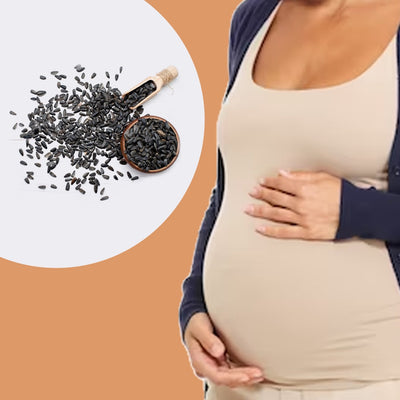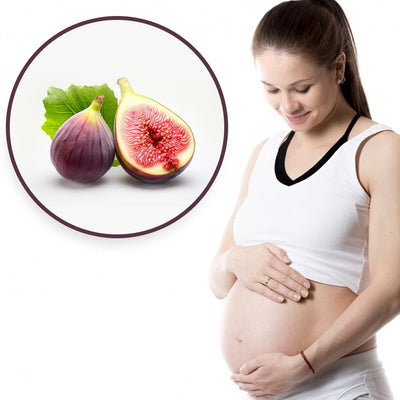Ragi During Pregnancy

Ragi During Pregnancy Benifits & Risk
Find out why it's so beneficial to include finger millet, or ragi, in your pregnancy diet. This ancient grain is a nutritional powerhouse for you and your child, full of vital nutrients. Ragi has it all, from fostering optimal fetal development to bolstering the wellbeing of mothers. You can increase your intake of calcium, iron, and vitamin D by including ragi in your diet. These nutrients are essential for the development and upkeep of strong bones and teeth. Additionally, it is a great source of fiber, which supports digestive health and helps ward off constipation during pregnancy. Furthermore, ragi has a low glycemic index, which makes it a beneficial option for gestational diabetes management. ragi during pregnancy and choose wisely to ensure a happy, healthy pregnancy. So, let's delve deeper into the benefits and risks of including ragi during pregnancy and make an informed decision for a healthy pregnancy journey.
Is it Safe to Eat Ragi During Pregnancy?
In addition to being safe, ragi can be a beneficial addition to a pregnant woman’s diet. Packed with vital nutrients, it offers a plethora of advantages that promote the health of the growing fetus and the mother.
Nutritional Facts About Ragi:
Expectant mothers should be aware of the dietary composition of ragi. The main nutrients that can be found in ragi, such as fiber, proteins, carbohydrates, and a range of vitamins and minerals, will be discussed in this section. Emphasizing the nutrient-dense nature of ragi can assist expectant mothers in making well-informed dietary decisions.
Health Benefits of Ragi During Pregnancy
Rich in Nutrients:
Packed with nutrients, ragi is a high-protein, high-nutrient whole grain that also contains minerals like calcium, iron, and phosphorus, vitamins (particularly B-complex vitamins), and carbohydrates. These nutrients are essential for the mother's general well-being and the development of the developing fetus.
Iron for Preventing Anemia:
Anemia and iron deficiency are common pregnancy concerns. A vital component of hemoglobin, iron is found in good amounts in ragi. Sufficient consumption of iron aids in the avoidance and treatment of anemia, guaranteeing the mother and developing child an ideal oxygen supply.
Calcium for Bone Development:
A large amount of calcium, which is necessary for the growth of the baby's bones and teeth, is found in ragi. In the later stages of pregnancy, when the baby's skeletal system is rapidly developing, calcium is especially crucial.
Fiber for Digestive Health:
The dietary fiber in ragi can help relieve constipation caused by pregnancy hormones. Fiber helps maintain regular bowel movements and a healthy digestive system overall, which is beneficial during pregnancy.
Low Glycemic Index for Blood Sugar Regulation:
Because ragi has a low glycemic index, it releases glucose into the bloodstream gradually. Because it helps regulate blood sugar levels, this property may be helpful to pregnant women, including those who have gestational diabetes. But it's crucial to keep an eye on portion sizes and eat a balanced diet.
Protein for Tissue Repair and Growth:
The protein content in ragi supports tissue repair and growth, both of which are crucial during pregnancy. Protein is essential for the development of the baby's organs, muscles, and other tissues.
Antioxidants for Immune Support:
Ragi contains antioxidants that help combat oxidative stress and support the immune system. This can be especially important during pregnancy to ensure the well-being of both the mother and the developing baby.
Steady Energy Release:
The complex carbohydrates in ragi provide a steady release of energy, helping to combat fatigue—a common symptom during pregnancy. This sustained energy can contribute to the overall stamina and well-being of expectant mothers.
Weight Management:
Ragi's high fiber content promotes a feeling of fullness, which can aid in weight management during pregnancy. Maintaining a healthy weight is important for both maternal and fetal well-being.
Versatility in Culinary Use:
Ragi can be easily incorporated into various dishes, such as porridge, rotis, dosas, and baked goods. This versatility makes it accessible and enjoyable for pregnant women to include in their diet.
How Much Ragi Can You Consume During Pregnancy?
The amount of ragi, or finger millet, that can be consumed during pregnancy varies based on individual factors, including overall health, dietary preferences, and specific nutritional needs. It's crucial to maintain a balanced diet and consult with a healthcare professional or a nutritionist to determine the appropriate quantity. Here are some considerations to keep in mind:
Individual Nutritional Needs:
The nutritional requirements during pregnancy can vary from person to person. Factors such as pre-existing health conditions, weight, age, and activity level all play a role in determining the specific dietary needs. A healthcare provider can assess these factors and provide personalized recommendations.
Trimester-Specific Needs:
The nutritional requirements change throughout the different stages of pregnancy. During the first trimester, the emphasis may be on addressing nausea and ensuring adequate folate intake. In the second and third trimesters, the focus shifts to the development of the baby's bones, organs, and overall growth. Ragi can be incorporated into the diet to meet these changing needs.
Dietary Diversity:
While ragi offers various health benefits, it's important not to rely solely on one food item. A well-balanced diet that includes a variety of nutrient-rich foods ensures that the mother and the baby receive a broad spectrum of essential nutrients. Ragi can be a part of this diverse diet.
Moderation is Key:
Like any other food, moderation is crucial when consuming ragi during pregnancy. While it is rich in nutrients, excessive intake may lead to an imbalance in the overall diet. It's advisable to follow recommended serving sizes and avoid excessive consumption.
Consultation with Healthcare Provider:
Before making significant changes to the diet, including the introduction of new foods like ragi, it's essential to consult with a healthcare provider or a registered dietitian. They can offer personalized advice based on the individual's health status and nutritional needs.
Food Sensitivities or Allergies:
Some individuals may have sensitivities or allergies to certain foods, including grains like ragi. If there is a history of food allergies or intolerances, it's important to be aware of potential reactions and choose alternatives accordingly.
Preparation Methods:
The method of preparation also matters. Opting for healthier cooking methods, such as steaming or roasting, can retain the nutritional value of ragi. Avoiding excessive use of oil or sugar in recipes is advisable.
Hydration:
Adequate hydration is essential during pregnancy. While ragi itself contains water, it's important to complement its consumption with sufficient water intake to support overall health and well-being.















